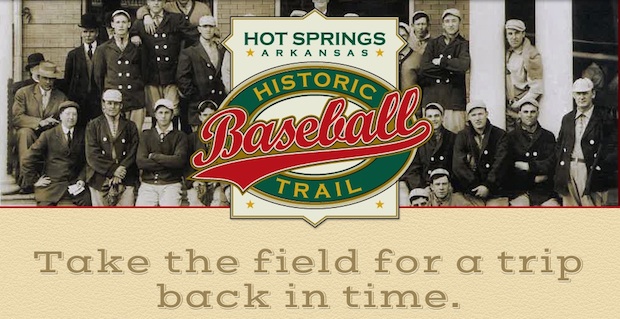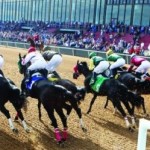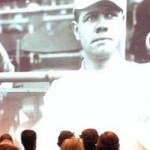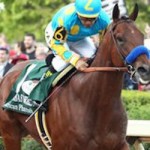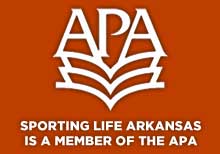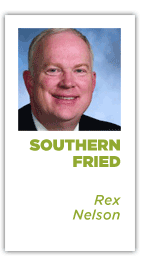 Thousands of sports fans from across the state will make their way to Hot Springs this week.
Thousands of sports fans from across the state will make their way to Hot Springs this week.
At Oaklawn Park, they’ll run the Rebel Stakes on Saturday, a race that should give us an indication of who the favorites are for the Arkansas Derby on April 12.
A few miles to the north at the Summit Arena, meanwhile, 14 high school state championship basketball games will be played from Thursday through Saturday.
Spa City visitors who happen to also love baseball owe it to themselves to take advantage of the Hot Springs Historical Baseball Trail. Hot Springs is, after all, the place where spring training took hold as an integral part of professional baseball. In the month of March, when baseball purists make pilgrimages to Florida for Grapefruit League games and Arizona for Cactus League games, Hot Springs’ place in baseball history should be honored and discussed.
The trail – a series of 28 historical markers – was launched two years ago. Additional markers will be added in the years to come. Those at the Summit Arena for high school basketball games this week also should take a walk through the adjacent convention center and see the classic baseball photos on the walls.
Steve Arrison, who heads Visit Hot Springs, long has been among the most innovative convention and visitors’ bureau executives in the country. It was Arrison, for instance, who came up with the idea of the World’s Shortest St. Patrick’s Day Parade, an event that’s expected to draw almost 20,000 people to downtown Hot Springs on Monday night.
“What began as our curiosity about why there are so many photos of Babe Ruth at various locations in Hot Springs wound up unearthing a treasure trove of historic associations between the world’s most famous baseball players and Hot Springs,” Arrison says. “Things really got rolling in the spring of 2011 when we were able to document that Ruth hit the first 500-foot-plus home run while playing spring baseball at Whittington Park. Bill Jenkinson, one of the preeminent baseball historians in the world, came to Hot Springs and helped us authenticate the legendary 573-foot shot that zoomed over Whittington Park’s fence, across Whittington Avenue and into the Arkansas Alligator Farm.”
Can’t you just picture the alligators crawling over to inspect that ball?
Mike Dugan of Hot Springs – who hails from an old Garland County family with a rich Irish-American history of operating taverns and other establishments – has studied the city’s baseball heritage for years.
“The real cornerstone of Hot Springs’ niche in baseball history was in 1886 when Hall of Famer Cap Anson was the manager and first baseman of the Chicago White Stockings,” Dugan says. “He brought his team south to prepare for the season. Anson had learned about our mineral waters and spas. The reason he brought the team to Hot Springs was so the players could boil out the alcoholic microbes.”
Sporting goods magnate A.G. Spalding owned the White Stockings and agreed with Anson that a spring visit to Hot Springs would be a good way to get players ready for the long season ahead. In addition to Anson, the team included future Hall of Famers John Clarkson and Mike “King” Kelly. Billy Sunday, who went on to become a famous evangelist, also was a member of the team.
“By 1915, all of the big league teams had trained in Hot Springs at some point,” Dugan says.
The Pittsburgh Pirates, Cleveland Spiders and Cincinnati Reds were among teams that quickly followed the White Stockings to the Spa City. Cy Young, who played for the Spiders and later the Boston Red Sox, was a regular in Hot Springs. In 1938, the city celebrated Cy Young Day and honored him with a downtown parade.
“Cy Young loved Hot Springs so much he returned regularly after he retired,” Dugan says.
The Pirates, led by Hall of Fame shortstop Honus Wagner, first came to Hot Springs in 1901 and had 22 spring training visits through 1926.
The Boston Americans adopted the name Red Sox during the 1907 season. The team trained in Little Rock in 1907-08 and then switched to Hot Springs. The Red Sox trained 13 times in Hot Springs from 1909 through 1923.
Here’s how the website www.hotspringsbaseballtrail.com describes the man who would become the most famous of the visiting players, Babe Ruth: “The young, talented Red Sox southpaw embraced the town and all of its blessings and vices like no one before or since. Nineteen-year-old George Herman Ruth was one year removed from St. Mary’s Industrial School for Orphans, Delinquent, Incorrigible and Wayward Boys. It was 1915 when he arrived in Hot Springs with his Red Sox teammates for spring training. He was a promising pitcher. … Golf and gambling were two of the passions he enjoyed with great gusto. He would be at the Hot Springs Country Club at 7 a.m. every day for 36 holes of golf before baseball practice. Ruth had no regard for money. The first year he came to Hot Springs he lost his entire big-league salary before playing his first regular season game. He found the casinos and Oaklawn Park irresistible.”
In time, five fields were built at Hot Springs for spring training.
Along with Dugan and Jenkinson, those who have researched the history of baseball in Hot Springs include Mark Blaeuer of Hot Springs, Don Duren of Texas and Tim Reid of Florida. Duren, a Hot Springs native, has written two books on the subject. His “Boiling Out at the Springs” is a history of spring training in the city. He’s also the author of “Bathers Baseball: A History of Minor League Baseball at the Arkansas Spa.” The Hot Springs Bathers, a member of the Class C Cotton States League, played from 1938-55 with the exception of the World War II years.
“They were kind of my heroes,” says Duren, who was a high school junior when the Bathers disbanded. “We didn’t have a major league team here so all of us kids thought a lot of them. … They just didn’t have the bucks to go around, and it was getting expensive. Also, television came in. You could see the big boys play on TV.”
Duren says that after his first book came out, “several guys wanted to do some more research. We found out that more than 45 percent of all the baseball Hall of Famers came to train in Hot Springs.”
The White Stockings played in the National League. That team was the predecessor of the Chicago Cubs. A separate team named the Chicago White Stockings entered the American League in 1901. That team became the Chicago White Sox.
The Sporting News published its first issue on March 17, 1886. On the front page of that inaugural issue, it was reported that the White Stockings would head to Hot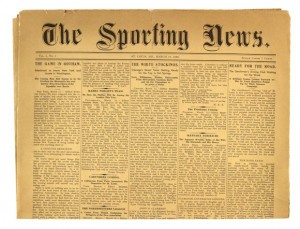 Springs for spring training. The team played on a field behind what’s now the Garland County Courthouse on Ouachita Avenue. The Avenue Hotel – which would later become the Majestic – housed the players.
Springs for spring training. The team played on a field behind what’s now the Garland County Courthouse on Ouachita Avenue. The Avenue Hotel – which would later become the Majestic – housed the players.
“Spalding’s spring training idea of 1886 was the signal for other major league teams to head south, many to the Arkansas resort,” Duren writes in the online Encyclopedia of Arkansas History & Culture. “The floodgates opened wide, and major and minor league teams, as well as individual players, flocked to the Spa City from 1886 to the 1940s. These teams included the Pittsburgh Pirates, Boston Red Sox, Cincinnati Reds, St. Louis Browns (later the Perfectos and, after that, the Cardinals), Philadelphia Phillies, Brooklyn Dodgers, New York Highlanders (later the Yankees) and others. Exhibition games, pepper games, infield practices, cutoff plays, sliding practice, calisthenics, mountain climbing and soaking in the tubs took place every spring in Hot Springs.
“These players participated in local life, too. In 1904, John McGraw, player/manager of the New York Giants, visited Hot Springs and was arrested, along with friend C.T. Buckley, for gambling. In 1912, Honus Wagner assisted in officiating a high school basketball game between Hot Springs High School and Memphis High School at the Bijou Skating Rink in Hot Springs. … John Taylor, owner of the Boston Red Sox, built a practice field in Hot Springs for his team in 1909. The field, then dubbed Majestic Park and located on Belding Avenue, is now the site of baseball fields owned by the Hot Springs Boys and Girls Club. In 1910, the Brooklyn Superbas (later the Dodgers) were in town practicing at their location on Whittington Avenue. One afternoon, Bill Dahlen, Brooklyn’s manager, gave his team a break from afternoon practice, and the players headed across town to scrutinize the first game between the Boston Red Sox and the Cincinnati Reds at Majestic Park. Most of the Brooklyn players sat on the newly built stands with about 200 other spectators. During the fifth inning, the small structure collapsed. Nobody was hurt, but Tommy McMillan, shortstop for Brooklyn, landed in Cy Young’s lap.”
The stories go on and on.
Even after Hot Springs was no longer a spring training site, baseball stars came there to earn extra money during the 1930s and 1940s teaching at Ray Doan’s Baseball School. Young players came to Hot Springs from across the country to attend the school and get a look from major league managers and scouts. Rogers Hornsby took over the school in the late 1940s and managed it until the middle of the 1950s. Instructors at the school included Lon Warneke, Dizzy Dean and Grover Cleveland Alexander. There was even a school for umpires at Hot Springs, led by major league umpire George Barr.
Negro League teams also trained in Hot Springs. The Kansas City Monarchs, New York Black Yankees and Pittsburgh Crawfords were among the squads that trained there. Satchel Paige was a regular. Jackie Robinson played in an exhibition game at Hot Springs in the 1950s.
What happened to the baseball connection?
“Though major league teams continued to send their pitchers and catchers to Hot Springs for pre-spring training until the early 1940s, most teams abandoned the city by the 1920s,” Duren writes. “Several minor league teams continued to train in Hot Springs until the early 1940s, but major league teams gradually shifted their spring training bases to other parts of the country. By World War II, most of the teams were training in Florida, Arizona or California. Reasons for the move to other states included warmer climate, less rain, better practice facilities and teams training within close proximity.”
The sports historians who did the research for the Hot Springs Historical Baseball Trail were able to document more than 300 players, managers, owners and baseball writers who spent time in the city. Arrison says at least 134 members of the Baseball Hall of Fame were in Hot Springs at one time or another.
“We need to let Americans know about the people, places and events that made Hot Springs a key element in the growth of the nation’s pastime,” Arrison says. “What we decided to do was gather as many names as could be historically authenticated and try to locate the places where these legends played or relaxed in Hot Springs.”
With the historical markers around town and the photo exhibition at the convention center, Hot Springs is properly embracing its place in baseball history.


